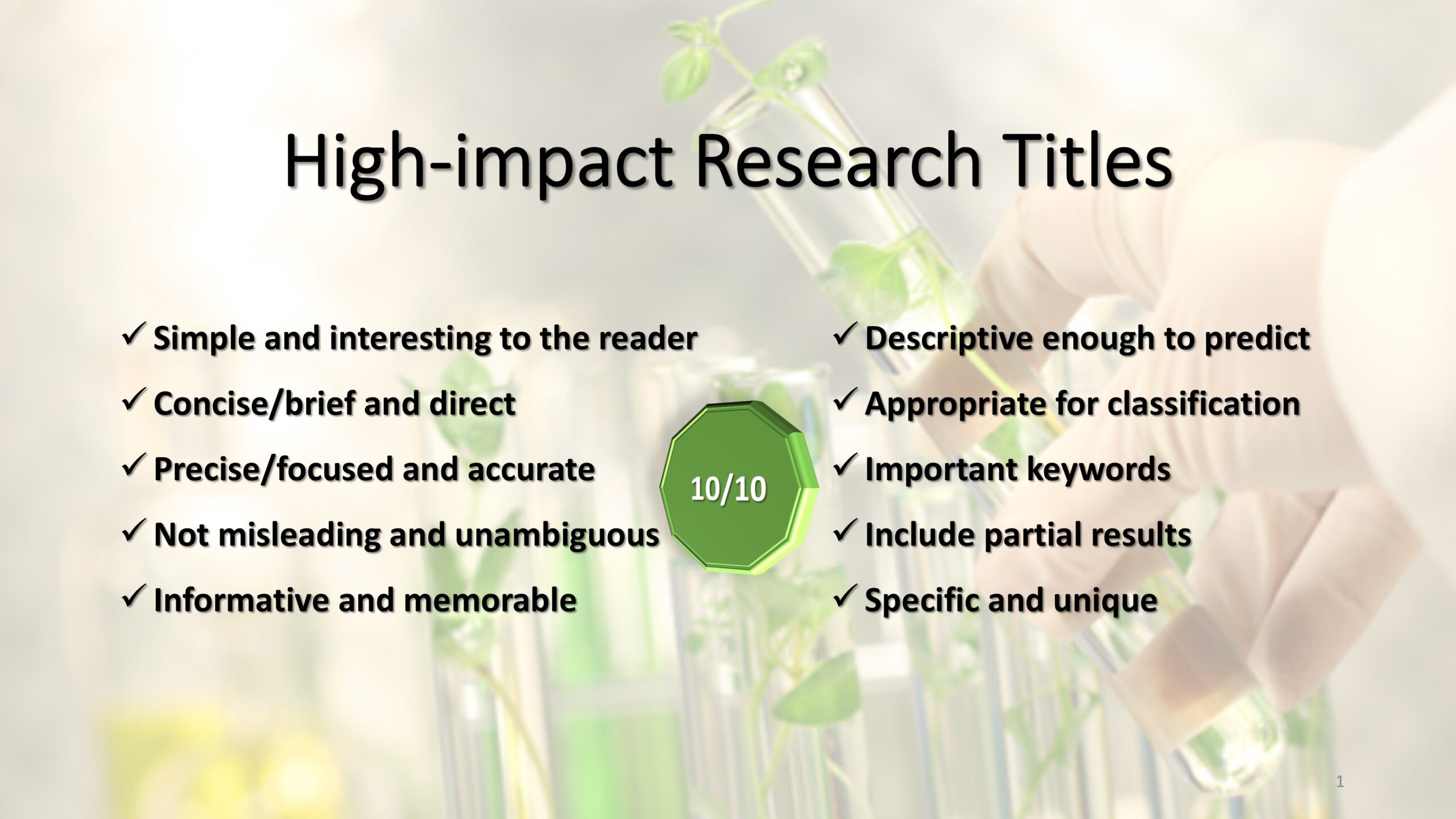
It is often observed that a small group of readers reads full research articles. However, the title of the research articles is read by the largest group of readers and is freely available to everyone. Hence, it is important to write the title of the research content appropriately according to the research. Here are guidelines and criteria for writing a high-impact research title.
1. Simple and interesting to the readers
Your research article will compete with many others in the same field. Readers will have multiple choices, so an interesting, attractive, and appropriate title will increase the likelihood of your article being read and cited.
2. Concise/brief and direct
A shorter title increases the possibility of citations. Avoid unnecessary words, jargon, and phrases. Ideally, a high-impact research title should be less than 12 words. However, always follow the journal guidelines for title length if specified.
3. Precise/focused and accurate
The title should spark the reader’s interest and curiosity. It must be precise, providing just enough detail to fulfil its purpose while being accurate and focused on the key achievements of the research. Finalize the title after completing the entire research write-up, including the abstract.
The main objective of the title is to arouse the interest and curiosity of the reader to read the content. Our research articles are often not reachable to the needy reader due to inaccurate titles. Hence the title should be precise and have just enough details to fulfill the objective of the title. At the same time, it should be accurate and focused on the key achievements of the research. That is why the title is finalized after completing all the content of the research write-up, including the abstract.
4. Not misleading and unambiguous
A misleading research title often deteriorates the frequency of citation and the reputation of the affiliation. So it’s important to avoid unambiguous statements and keywords in the title. Do not include any objectives, study design, and results that have not been achieved and reported in the main content.
5. Informative and memorable
The key information about the objectives and study design achieved should be included in the title to encourage the reader to read further. In addition, what has been discovered also needs to be included in the title. At the same time, the title should be memorable to the reader to increase the citation frequency. Informative and memorable has often inverse correlations and it is hard to maintain both together in a title. However, it is possible by implementing simplified keywords and keeping readers’ points of view on the title.
6. Descriptive enough to predict the content of the research
Readers usually look at the title of an article to predict its content and see if it supports their views. Therefore, the title should be descriptive enough to help readers understand the article. If the title is not clear, readers might skip the article without even reading the abstract, which can reduce the article’s overall impact.
7. Appropriate for classification
Before writing a high-impact research title, it is important to note that your research content is for the particle group of niches not for everyone in the world. So, the first thing is to know your reader’s niche and then write according to their style/perception/format followed. For example, if we write ‘COD’ in the title, it can be perceived as ‘chemical oxygen demand’ or ‘cash on delivery’ depending upon their niche. Hence, while writing the title mind that your research article is for specific readers and not for everyone in the world.
8. Important keywords
To increase the discoverability of your articles in search engines include critical keywords in the title. Most search engines search the article by keywords provided in the list and included in the title. Hence it is important to have one or two critical keywords which will increase the possibility of more citations since more readers will be reachable to the articles.
9. Include partial results to increase the curiosity
Readers will continue to your abstract and full research content if the title sparks their curiosity about your findings. Including partial results in the title can help engage readers by giving them a hint of what to expect. This will help them predict the content and results and encourage them to read your article to verify the findings. More readers mean a higher chance of citations and research impacts.
10. Specific and unique
It’s important to have a specific and original title for your research. The title should not be plagiarized or too similar to existing literature. To ensure your title is unique, you can search for it using a search engine and confirm its originality.
Calculate your research title’s impact on readers using the Research Title Impact Calculator.
To know more about the high-impact research topic and selection guidelines visit Complete guidelines to choose a high-impact research topic for Ph.D.

